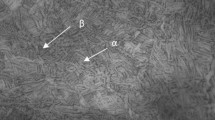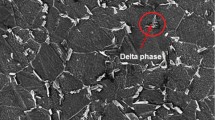Abstract
In the present work, the machinability of difficult-to-cut Inconel 718 aerospace superalloy is studied under vegetable oil-based minimum quantity lubrication (MQL) in consideration with different cutting tool materials. MQL environment is produced by supplying air-oil mist in which biodegradable sunflower oil is used. In comparison with uncoated carbide tool, performances of MT-CVD multi-layered TiCN-Al2O3-TiOCN coated and MT-CVD double-layered TiCN-Al2O3 coated carbide inserts are assessed during longitudinal turning of Inconel 718. Coating materials are characterized by average thickness of individual coating layer, elemental composition and frictional coefficient. With constant feed and depth-of-cut (0.1 mm/rev and 0.25 mm respectively), quantitative responses such as tangential cutting force, tool-tip temperature and width of tool flank wear are considered as machinability assessment criteria under varied cutting speed condition (v = 60, 80, 100 and 130 m/min). Notable reduction in tool-tip temperature (25.6% and 30.4%) and reduction in cutting forces (10.6% and 22.3%) are obtained for coated tool [T1] and coated tool [T2] respectively, when compared to uncoated counterpart. Detailed analysis on tool wear modes is carried out followed by chip’s macro/micro-morphology. Apart from chip’s micro-morphological parameters, morphologies of chip’s back and free surfaces and chip microhardness are studied.































Similar content being viewed by others
References
Ezugwu E O, Wang Z M and Machad A R 1999 The machinability of nickel-based alloys: a review. J. Mater. Process. Technol. 86(1–3): 1–16
Kuljanic E, Sortino M and Totis G 2010 Machinability of difficult machining materials. In: 14th International Research/ Expert Conference, Trends in the Development of Machinery and Associated Technology, Mediterranean Cruise, 1-14
Konyashin I Y 1995 PVD/CVD technology for coating cemented carbides. Surf. Coat. Technol. 71(3): 277–283
Ducros C, Benevent V and Sanchette F 2003 Deposition, characterization and machining performance of multilayer PVD coatings on cemented carbide cutting tools. Surf. Coat. Technol. 163: 681–688
Ezugwu E O and Bonney J 2005 Finish machining of nickel-base Inconel 718 alloy with coated carbide tool under conventional and high-pressure coolant supplies. Tribol. Trans. 48(1): 76–81
Kamata Y and Obikawa T 2007 High speed MQL finish-turning of Inconel 718 with different coated tools. J. Mater. Process. Technol. 192: 281–286
Settineri L, Faga M G and Lerga B 2008 Properties and performances of innovative coated tools for turning inconel. Int. J. Mach. Tools Manuf. 48(7–8): 815–823
Thakur D G, Ramamoorthy B and Vijayaraghavan L 2009 Machinability investigation of Inconel 718 in high-speed turning. Int. J. Adv. Manuf. Technol. 45(5–6): 421–429
Shokrani A, Dhokia V and Newman S T 2012 Environmentally conscious machining of difficult-to-machine materials with regard to cutting fluids. Int. J. Mach. Tools Manuf. 57: 83–101
Lawal S A, Choudhury I A and Nukman Y 2012 Application of vegetable oil-based metalworking fluids in machining ferrous metals—a review. Int. J. Mach. Tools Manuf. 52(1): 1–12
Rahim E A and Sasahara H 2011 An analysis of surface integrity when drilling inconel 718 using palm oil and synthetic ester under MQL condition. Mach. Sci. Technol. 15(1): 76–90
Wang Y, Li Zhang Y, Yang M, Li B, Jia D, Hou Y and Mao C 2016 Experimental evaluation of the lubrication properties of the wheel/workpiece interface in minimum quantity lubrication (MQL) grinding using different types of vegetable oils. J. Clean. Prod. 127: 487–499
Yıldırım Ç V, Kıvak T, Sarıkaya M and Erzincanlı F 2017 Determination of MQL parameters contributing to sustainable machining in the milling of nickel-base superalloy waspaloy. Arab. J. Sci. Eng. 42(11): 4667–4681
Sarkar S and Datta S 2020 Machining performance of Inconel 718 under dry, MQL and nanofluid MQL conditions: application of coconut oil (base fluid) and multi-walled carbon nanotubes as additives. Arab. J. Sci. Eng. 46(3): 2371–2395
Ozcelik B, Kuram E, Demirbas E and Şik E 2011 Optimization of surface roughness in drilling using vegetable-based cutting oils developed from sunflower oil. Indus. Lubri. Tribol. 63(4): 271–276
Anand K N and Mathew J 2020 Evaluation of size effect and improvement in surface characteristics using sunflower oil-based MQL for sustainable micro-endmilling of Inconel 718. J. Braz. Soc. Mech. Sci. Eng. 42(4): 1–13
Guntreddi B and Ghosh A 20 High-speed machining of aluminium alloy using vegetable oil based small quantity lubrication. Proc. IMechE Part B: J. Eng. Manuf. [DOI: 10.1177%2F0954405420929787]
Koseki S, Inoue K, Morito S, Ohba T and Usuki H 2015 Comparison of TiN-coated tools using CVD and PVD processes during continuous cutting of Ni-based superalloys. Surf. Coat. Technol. 283: 353–363
Çelik Y H, Kilickap E and Güney M 2017 Investigation of cutting parameters affecting on tool wear and surface roughness in dry turning of Ti-6Al-4V using CVD and PVD coated tools. J. Braz. Soc. Mech. Sci. Eng. 39(6): 2085–2093
Ginting A, Skein R, Cuaca D and Masyithah Z 2018 The characteristics of CVD-and PVD-coated carbide tools in hard turning of AISI 4340. Measurement 129: 548–557
Martinho R P, Silva F J G, Martins C and Lopes H 2019 Comparative study of PVD and CVD cutting tools performance in milling of duplex stainless steel. Int. J. Adv. Manuf. Technol. 102(5): 2423–2439
Bhatt A, Attia H, Vargas R and Thomson V 2010 Wear mechanisms of WC coated and uncoated tools in finish turning of Inconel 718. Tribol. Int. 43(5–6): 1113–1121
Thakur D G, Ramamoorthy B and Vijayaraghavan L 2012 Some investigations on high speed dry machining of aerospace material Inconel 718 using multicoated carbide inserts. Mater. Manuf. Process. 27(10): 1066–1072
Behera B C, Chetan S G and Paruchuri V R 2019 Study of saw-tooth chip in machining of Inconel 718 by metallographic technique. Mach. Sci. Technol. 23(3): 431–454
Xavior M A, Patil M, Maiti A, Raj M and Lohia N 2016 Machinability studies on INCONEL 718. In IOP Conf. Series: Mater. Sci. Eng. 149(1): 012019
O’Sullivan D and Cotterell M 2001 Temperature measurement in single point turning. J. Mater. Process. Technol. 118(1–3): 301–308
Suhail A H, Ismail N, Wong S V and Jalil N A 2010 Optimization of cutting parameters based on surface roughness and assistance of workpiece surface temperature in turning process. American J. Eng. Appl. Sci. 3(1): 102–108
Darshan C, Jain S, Dogra M, Gupta M K, Mia M and Haque R 2019 Influence of dry and solid lubricant-assisted MQL cooling conditions on the machinability of Inconel 718 alloy with textured tool. Int. J. Adv. Manuf. Technol. 105(5): 1835–1849
Sarkar S and Datta S 2021 Machining performance of inconel 718 under dry, MQL, and nanofluid MQL conditions: application of coconut oil (base fluid) and multi-walled carbon nanotubes as additives. Arab. J. Sci. Eng. 46(3): 2371–2395
Sahoo S P and Datta S 2022 Comparative experimental study on application feasibiility of MTCVD TiCN-Al2O3-TiOCN multi-layer coated carbide and PVD TiN single layer coated composite ceramic inserts during dry machining of Ti-6Al-4V. Sadhana 47: 105. https://doi.org/10.1007/s12046-022-01880-9
Turley D M and Doyle E D 1982 Calculation of shear strains in chip formation in titanium. Mater. Sci. Eng. 55: 45–48
Zhang K, Wang K, Liu Z and Xu X 2020 Strain rate of metal deformation in the machining process from a fluid flow perspective. Appl. Sci. 10(9): 3057. https://doi.org/10.3390/app10093057
Rakesh M and Datta S 2020 Machining of Inconel 718 using coated WC tool: effects of cutting speed on chip morphology and mechanisms of tool wear. Arab. J. Sci. Eng. 45(2): 797–816
Zhao J, Liu Z, Wang B, Hua Y and Wang Q 2018 Cutting temperature measurement using an improved two-color infrared thermometer in turning Inconel 718 with whisker-reinforced ceramic tools. Ceram. Int. 44(15): 19002–19007
Gupta MK, Pruncu CI, Mia M, Singh G, Singh S, Prakash C, Sood PK and Gill HS 2018 Machinability investigations of Inconel-800 super alloy under sustainable cooling conditions. Mater. 11(11): 2088 (1-13) https://doi.org/10.3390/ma11112088
Devillez A, Schneider F, Dominiak S, Dudzinski D and Larrouquere D 2007 Cutting forces and wear in dry machining of Inconel 718 with coated carbide tools. Wear 262(7–8): 931–942
Thirumalai R, Senthilkumaar JS, Selvarani P and Ramesh S 2013 Machining characteristics of Inconel 718 under several cutting conditions based on Taguchi method. Proc. IMechE, Part C: J. Mech. Eng. Sci. 227(9): 1889-1897
Sen B, Mia M, Krolczyk G M, Mandal U K and Mondal S P 2021 Eco-friendly cutting fluids in minimum quantity lubrication assisted machining: a review on the perception of sustainable manufacturing. Int. J. Precision Eng. Manuf.-Green Technol. 8: 249–280
Ibrahim G A, Haron C H C and Ghani J A 2011 Said A Y M and Yazid M Z A 2011 Performance of PVD-coated carbide tools when turning Inconel 718 in dry machining. Adv. Mech. Eng. 2011: 1–7. https://doi.org/10.1155/2011/790975
Mazurkiewicz M, Kubala Z and Chow J 1989 Metal machining with high pressure water jet cooling assistance - a new possibility. J. Eng. Indust. 111: 7–12
Öjmertz K M C and Oskarson H B 1999 Wear on SiC-whiskers reinforced ceramic inserts when cutting Inconel with waterjet assistance. Tribol. Trans. 42(3): 471-478
Yan P, Rong Y and Wang G 2016 The effect of cutting fluids applied in metal cutting process. Proc. IMechE Part B: J. Eng. Manuf. 230(1): 19–37
Godlevski V A, Volkov A V, Latyshev V N and Maurin L N 1997 The kinetics of lubricant penetration action during machining. Lubr. Sci. 9(2): 127–140
Wang T D, Liu E L, Li Z and Ju H Y 2014 Investigation of tool-wear and surface roughness in turning Ti6Al4V under different cooling lubrication conditions. Mater. Sci. Forum. 800–801: 180–185
Crafoord RJSOA, Kaminski J, Lagerberg S, Ljungkrona O and Wretland A 1999 Chip control in tube turning using a high-pressure water jet. Proc. IMechE Part B: J. Eng. Manuf. 213(8): 761–767
Liu W and Liu Z 2018 High-pressure coolant effect on the surface integrity of machining titanium alloy Ti-6Al-4V: a review. Mater. Res. Express 5: 032001
Zhu G, Yuan S, Kong X, Zhang C and Chen B 2020 Experimental observation of oil mist penetration ability in minimum quantity lubrication (MQL) spray. J. Mech. Sci. Technol. 34: 3217–3225
Pawade R S and Joshi S S 2011 Mechanism of chip formation in high-speed turning of Inconel 718. Mach. Sci. Technol.: Int. J. 15(1): 132-152
Kaynak Y 2014 Evaluation of machining performance in cryogenic machining of Inconel 718 and comparison with dry and MQL machining. Int. J. Adv. Manuf. Technol. 72(5): 919–933
Barry J and Byrne G 2002 Chip formation, acoustic emission and surface white layers in hard machining. CIRP Annals 51(1): 65–70
Sun J and Guo Y B 2008 A new multi-view approach to characterize 3D chip morphology and properties in end milling titanium Ti–6Al–4V. Int. J. Mach. Tools Manuf. 48(12–13): 1486–1494
Author information
Authors and Affiliations
Corresponding author
Appendix
Appendix
Rights and permissions
About this article
Cite this article
SAHOO, S.P., PANDEY, K. & DATTA, S. Performance of uncoated/coated carbide inserts during MQL (sunflower oil) assisted machining of Inconel 718 superalloy. Sādhanā 47, 193 (2022). https://doi.org/10.1007/s12046-022-01969-1
Received:
Revised:
Accepted:
Published:
DOI: https://doi.org/10.1007/s12046-022-01969-1






